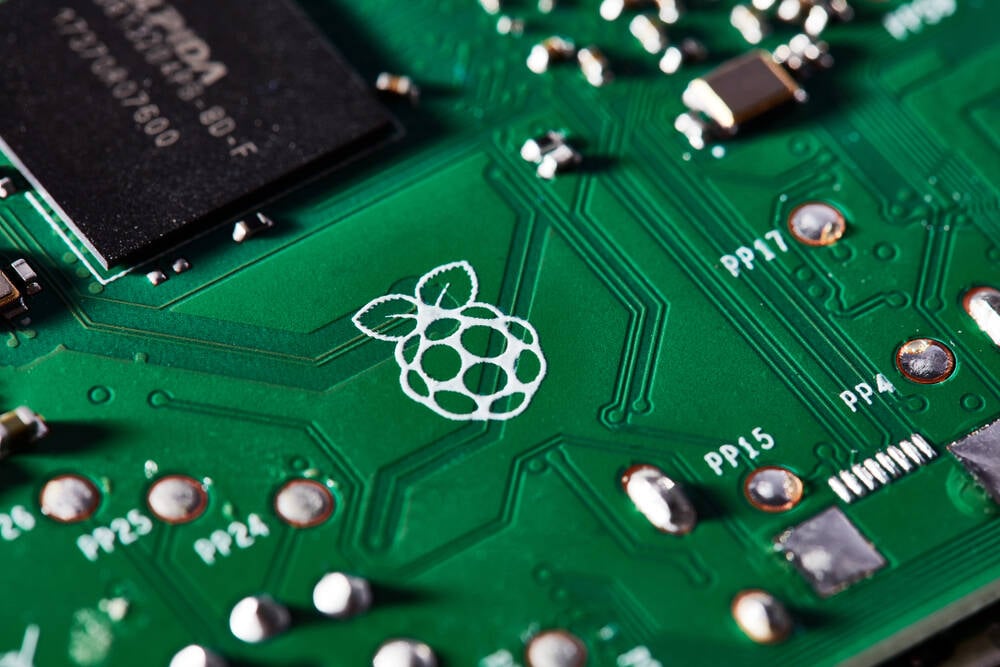Raspberry Pi Power-over-Ethernet Injector Zaps Life Into Networks Lacking Spark

The Raspberry Pi team has launched a Power-over-Ethernet Injector aimed at users who are seeking to add some juice to their network but who lack a network switch capable of doing so.
Power-over-Ethernet is a technology that brings power to devices over the network. It might seem redundant in a home lab environment, but being able to run power through an Ethernet cable, as well as data, opens up a variety of applications in places where plugging into a power oulet isn't an option.
The problem comes with the switch – something capable of supporting Power-over-Ethernet (PoE) is required. Where that's not possible, there is the Raspberry Pi PoE+ Injector, which supports IEEE 802.3af (PoE, 13 W) and IEEE 802.11at (PoE+, 25 W) standards, and mains voltages between 100 V and 240 V. Plug in a mains lead (not included) and some RJ45 connectors, and away you go.
This is assuming your devices can accept power this way. Raspberry Pi famously came somewhat unstuck with the Pi 3 Model B+ Power-over-Ethernet adapter. Problems with power to the USB ports were eventually traced to hardware issues that weren't picked up in testing before release.
There are plenty of other Power-over-Ethernet Injectors available from vendors, including TP-Link. The Raspberry Pi unit is priced at $25.
- Raspberry Pi RP2350 microcontroller now available to mere mortals
- Stuff a Pi-hole in your router because your browser is about to betray you
- Raspberry Pi launches CM4 variant that laughs in the face of frostbite
- Raspberry Pi hands out prizes to all in the RP2350 Hacking Challenge
While Raspberry Pi computers since 2018 have been able to function as Powered Devices (PD), drawing from PoE, an optional PoE or PoE+ HAT (Hardware Attached on Top) has been required to make the magic happen. The official PoE+ HAT+ for the Raspberry Pi 5 was absent from the announcement.
Some third-party options exist, or a splitter that breaks out a USB-C power connector is available. However, in the product announcement, Pi supremo Eben Upton wrote: "This promises to be our smallest, most efficient PD accessory, and is in the final stages of development."
We asked Upton what the hold-up was: "The principal cause of delay is that for the first time it features a planar transformer on our own PCB. So a ferrite clamped around the PCB, rather than a separate wound object (like the PoE HAT) or a planar transformer from a third party (like the PoE+ HAT)."
"Lots of engineering challenges!" he added.
"The end product is incredibly Spartan-looking, with very few components, and fits inside the official case, with most of the clever stuff sitting in the space between the fan and the USB and Ethernet connectors." ®
From Chip War To Cloud War: The Next Frontier In Global Tech Competition
The global chip war, characterized by intense competition among nations and corporations for supremacy in semiconductor ... Read more
The High Stakes Of Tech Regulation: Security Risks And Market Dynamics
The influence of tech giants in the global economy continues to grow, raising crucial questions about how to balance sec... Read more
The Tyranny Of Instagram Interiors: Why It's Time To Break Free From Algorithm-Driven Aesthetics
Instagram has become a dominant force in shaping interior design trends, offering a seemingly endless stream of inspirat... Read more
The Data Crunch In AI: Strategies For Sustainability
Exploring solutions to the imminent exhaustion of internet data for AI training.As the artificial intelligence (AI) indu... Read more
Google Abandons Four-Year Effort To Remove Cookies From Chrome Browser
After four years of dedicated effort, Google has decided to abandon its plan to remove third-party cookies from its Chro... Read more
LinkedIn Embraces AI And Gamification To Drive User Engagement And Revenue
In an effort to tackle slowing revenue growth and enhance user engagement, LinkedIn is turning to artificial intelligenc... Read more

